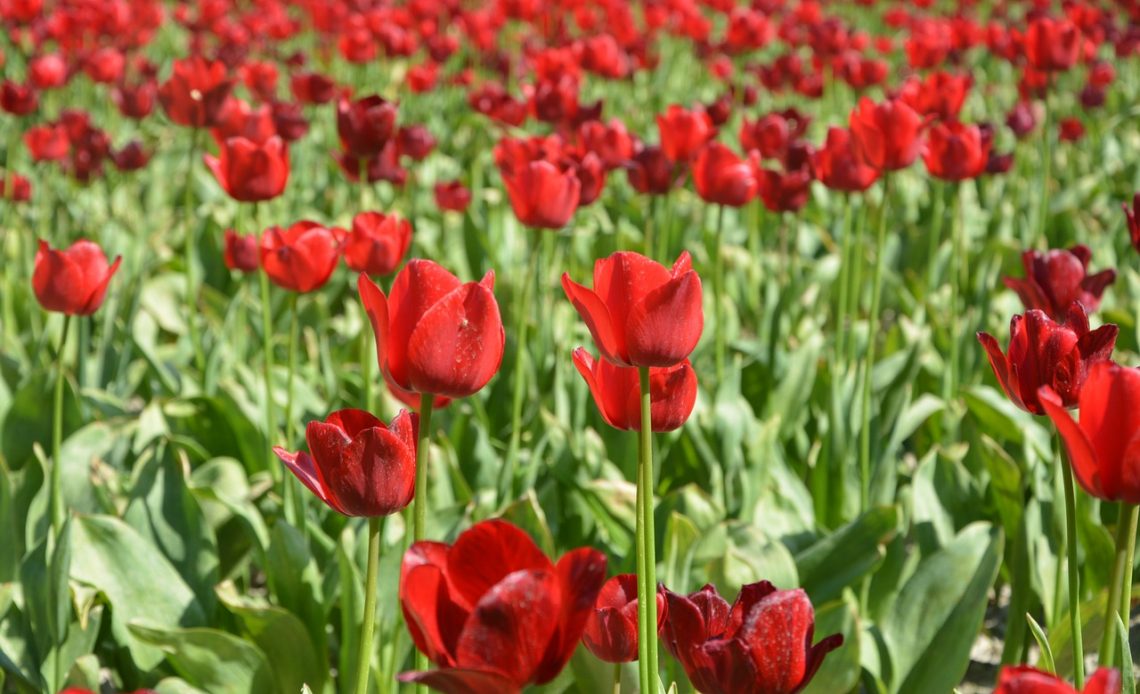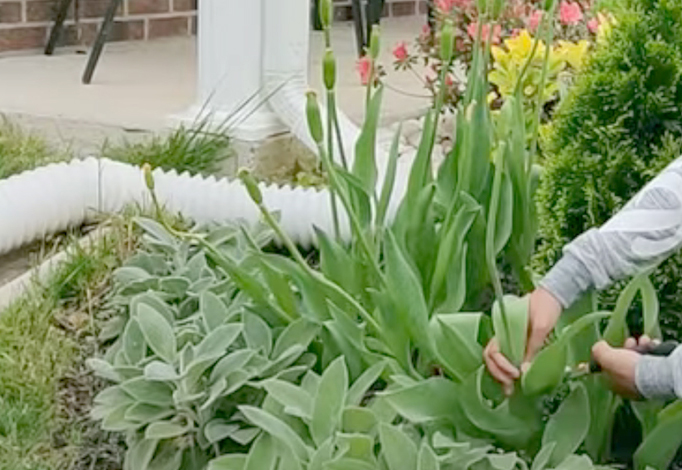
Tulips are one of the most popular and beautiful flowers in the world. They come in a variety of colors, shapes, and sizes, and they can brighten up any garden or vase. However, tulips also require some care and maintenance to keep them healthy and blooming. One of the most important tasks is pruning, which involves removing dead or damaged parts of the plant. Pruning tulips can help them grow better, prevent diseases, and extend their flowering period. In this article, we will explain how to prune tulips, when to prune tulip trees, and how to keep cut tulips fresh.

How to Prune Tulips After They Bloom?
The best time to prune tulips is after they have finished blooming, usually in late spring or early summer. Pruning tulips too early can reduce their energy and affect their next year’s growth. Pruning tulips too late can make them look messy and attract pests and diseases.
To prune tulips after they bloom, you will need a pair of sharp and clean scissors or pruning shears. Follow these steps:
- Step1. Cut off the faded flower heads at the base of the stem. This will prevent the tulips from forming seeds, which can drain their energy and reduce their bulb size.
- step 2. Leave the green leaves and stems intact until they turn yellow and wither. The leaves and stems are essential for photosynthesis, which helps the tulips store food in their bulbs for the next season.
- step 3. Cut off the yellow and withered leaves and stems at the base, as close to the ground as possible. This will make your garden look neat and tidy, and prevent fungal infections and rotting.
- step 4. Dispose of the pruned parts in a compost bin or a trash bag. Do not leave them on the ground, as they can harbor diseases and pests that can harm your tulips or other plants.
When to Prune Tulips? (Best Time)
Pruning tulips is a simple process that should be done annually in the fall or early spring. The best time to prune tulips is after they bloom in the spring. Once your tulips blossom and the flowers start to fade, the flowers become wilted and look unattractive. Typically, tulips begin to fade in May or June. The exact month your flowers start to fade will vary based on your location and climate.

How to Keep Cut Tulips Fresh?
Cut tulips are a wonderful way to decorate your home or to give as a gift. They can last for a week or more, if you take good flower care of them. Here are some tips on how to keep cut tulips fresh:
- Choose fresh and healthy tulips from a reputable florist or a garden center. Look for tulips that have firm and green stems, and buds that are not fully open yet. Avoid tulips that have wilted or yellow leaves, or brown or moldy spots on the petals or the stems.
- Cut the tulip stems at a 45-degree angle, about an inch from the bottom, using a sharp and clean knife or scissors. This will help the tulips absorb water and nutrients better, and prevent them from rotting.
- Remove any leaves that will be submerged in water, as they can rot and contaminate the water. Leave some leaves on the upper part of the stem, as they can help the tulips stay upright and support the flowers.
- Fill a clean vase with lukewarm water, and add a packet of floral preservative or a teaspoon of sugar. This will help extend the vase life of the tulips and prevent bacterial growth. You can also add a drop of bleach or a penny to the water, to keep it clear and fresh.
- Arrange the tulips in the vase, and place them in a cool and bright spot, away from direct sunlight, heat sources, and drafts. Tulips are phototropic, which means they bend towards the light, so you may need to rotate the vase every day to keep them balanced and straight.
- Change the water and recut the stems every two or three days, or whenever the water becomes cloudy or smelly. This will help prevent the tulips from wilting and drooping, and keep them hydrated and nourished.
- Enjoy your cut tulips, and watch them bloom and grow in your vase.
Here are some frequently asked questions and answers about tulip pruning:
How to Cut Tulips So They Regrow?
If you want to cut tulips from your garden and enjoy them in a vase, you can do so without harming their future growth. However, you need to wait until the tulips have finished blooming, and their petals have fallen off. Then, you can cut the stems as close to the ground as possible, leaving the leaves and the bulbs intact. The leaves will continue to photosynthesize and store food in the bulbs, which will help them regrow next year. Do not cut the leaves until they turn yellow and wither, and do not dig up the bulbs unless you want to divide or relocate them.

How to Cut Tulips for Vase?
If you want to cut tulips for vase, you need to do it in the morning or in the evening, when the tulips are well-hydrated and crisp. Cut the stems at a 45-degree angle, about an inch from the bottom, using a sharp and clean knife or scissors. Remove any leaves that will be submerged in water, and place the tulips in a bucket of lukewarm water. Let them soak for an hour or two, to help them absorb water and prevent them from drooping. Then, arrange them in a vase with fresh water and floral preservative, and follow the tips on how to keep cut tulips fresh.

If you prune your vase tulips at the right time and regularly, they will stay fresher and survive longer. Remember that the answer to the question “How long do tulips last in vases?” is directly related to your attention to tulip flower care. Tulips meaning contains deep messages. Therefore, you may want to spend longer with them.
Should I Deadhead My Tulips?
Deadheading tulips refers to the practice of removing the faded or spent flowers from the plant. You should deadhead your tulips when the petals have fallen off the flower but the leaves are still gree. This allows the plant to focus its energy on the bulb rather than seed production. Leaving the leaves allows the plant to continue photosynthesizing and storing nutrients to prepare for the following year.
